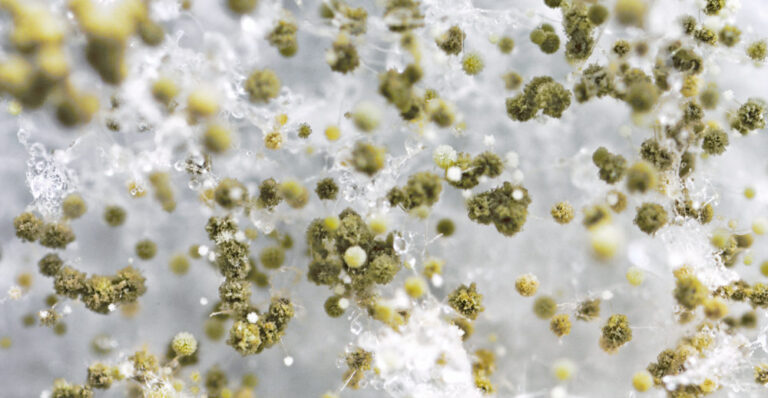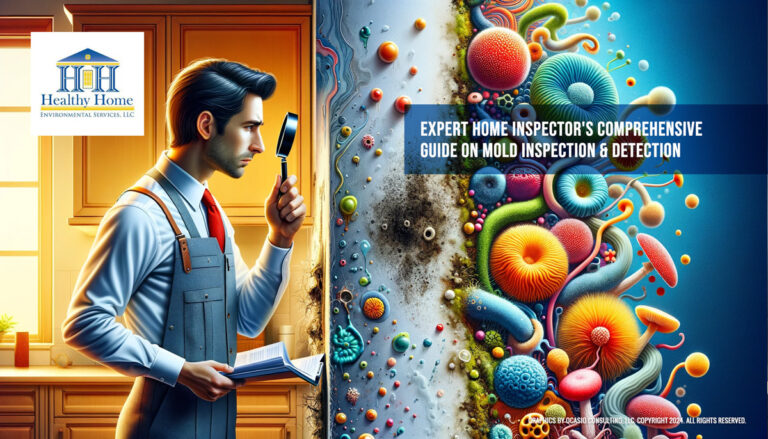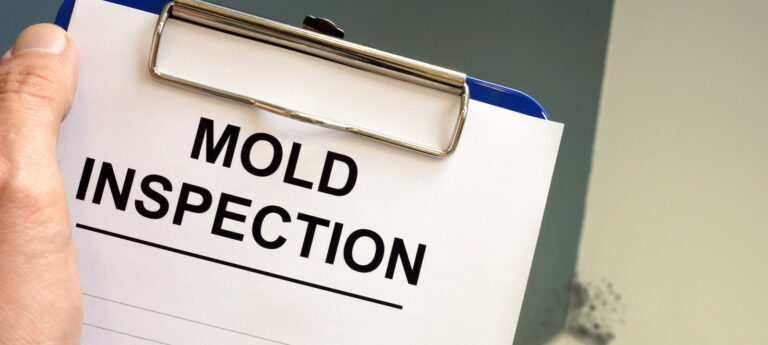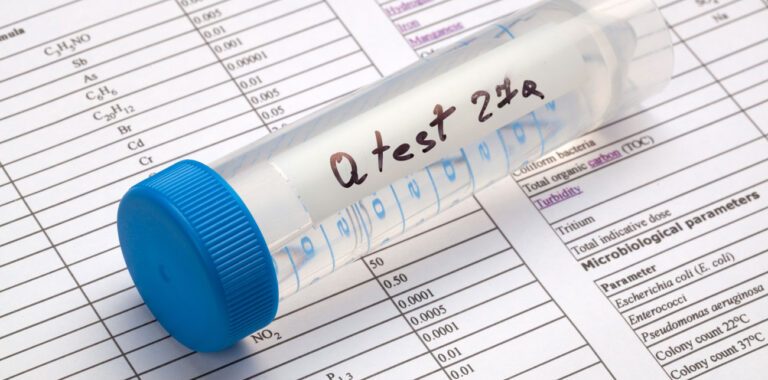What are the signs of mold toxicity?
What are the signs of mold toxicity?
Mold toxicity refers to the negative health effects of exposure to toxic mold and mold spores. Mold is a fungus commonly found in damp environments and can grow on various surfaces, including walls, ceilings, and carpets.
Mold can grow indoors, releasing spores into the air, which can be inhaled by building occupants and cause various health problems.
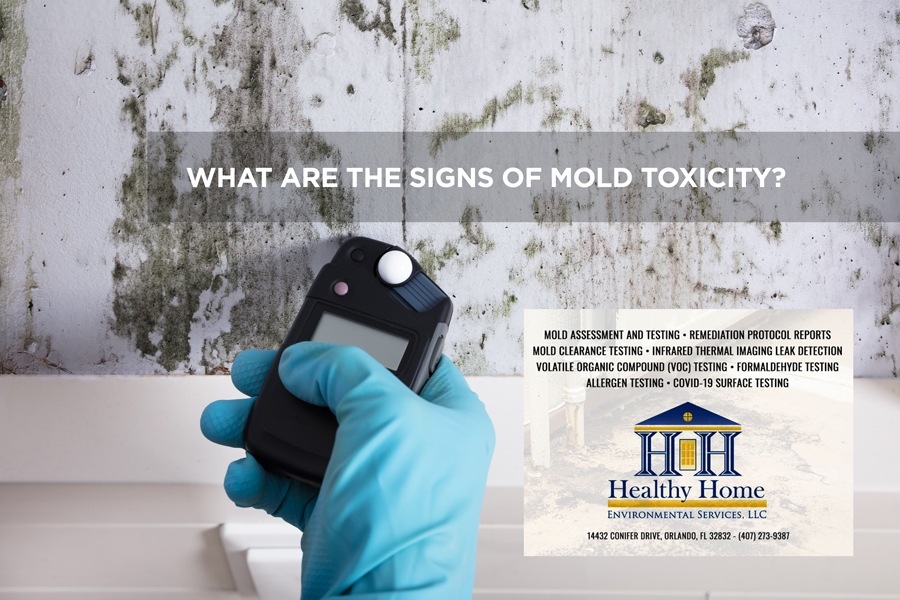
Several signs and symptoms can indicate mold toxicity. Some common symptoms of mold exposure include:
- Respiratory problems: Mold exposure can cause various respiratory problems, such as coughing, sneezing, and difficulty breathing. Sometimes, mold exposure can trigger asthma attacks or other allergic reactions.
- Eye irritation: Mold spores can also irritate the eyes, causing symptoms such as redness, swelling, and itching. In severe cases, mold exposure can even cause vision loss.
- Skin irritation: Mold allergies can cause skin irritation, particularly in people who are sensitive to it. Symptoms of mold-related skin irritation may include redness, itching, and rash.
- Headaches: Many people exposed to mold report experiencing headaches as a result. These headaches can range from mild to severe and may accompany other symptoms, such as dizziness and nausea.
- Fatigue: Mold exposure can cause fatigue, which is characterized by a feeling of being constantly tired or lacking energy. This can be caused by various factors, including the body’s immune response to mold and the release of toxins from mold.
- Cognitive problems: Some people exposed to mold report experiencing cognitive problems, such as difficulty concentrating, memory loss, and confusion. These symptoms may be caused by the toxins produced by mold, which can affect the brain and nervous system.
- Immunosuppression: In some cases, prolonged exposure to mold can weaken the immune system, making it more difficult for the body to fight off infections and other illnesses. This can increase the risk of developing mold illness or other health problems.
If you suspect you suffer from mold toxicity, see a doctor as soon as possible. Your doctor can diagnose the condition (to see if you are allergic to mold) and recommend a course of treatment, which may include medications, allergy shots, or other therapies. In some cases, removing indoor mold in your house may be necessary to prevent further exposure and reduce mold toxicity symptoms.
To prevent mold growth in your home or workplace. Maintain a clean and dry environment, using a dehumidifier to control moisture levels, and promptly address any leaks or water damage. Taking these precautions can reduce your risk of developing mold toxicity and protect your and your family’s health.
What is black mold, and is it dangerous?
Black mold, also known as Stachybotrys chartarum, is a type of mold that can grow on damp or wet surfaces, such as walls or ceilings. It is typically greenish-black in color and has a musty, unpleasant odor.
Black mold is considered dangerous because it produces toxins called mycotoxins, which can have negative health effects when inhaled or ingested. Exposure to black mold has been linked to severe symptoms, including respiratory problems, skin irritation, and immune system suppression. In severe cases, black mold exposure can even cause death.
To prevent the growth of black mold, it is important to keep indoor spaces dry and well-ventilated. Regularly inspect areas where moisture might accumulate for signs of mold growth and address any problems quickly before they become hazardous. Contact a local mold inspection and testing company to assess and check for indoor mold levels.
How Do You Know If Mold Is Making You Sick?
If you suspect that certain types of mold are making you sick (by breathing in mold spores), there are several signs and symptoms that you can look for. Some of the most common include:
- Respiratory problems: If you are experiencing coughing, sneezing, difficulty breathing, or other respiratory symptoms, this may be a sign that mold is making you sick. These toxic mold exposure symptoms can be caused by mold spores inhaled into the lungs, triggering allergic reactions or other health problems.
- Eye irritation: Mold spores can also irritate the eyes, causing redness, swelling, and itching. If you are experiencing these symptoms, they may be caused by mold exposure.
- Skin irritation: If you have a rash, itching, or other skin irritation, this may be a sign that mold is making you sick. Mold can cause these symptoms by releasing toxins that irritate the skin.
- Headaches: Many people who are exposed to mold report experiencing headaches. These headaches can range from mild to severe and may accompany other symptoms, such as dizziness and nausea.
- Fatigue: If you are feeling constantly tired or lacking energy, this may be a sign that mold is making you sick. Mold exposure can cause fatigue by triggering the body’s immune response and releasing toxins.
- Cognitive problems: Some people exposed to mold report experiencing cognitive problems, such as difficulty concentrating, memory loss, and confusion. These symptoms may be caused by the toxins produced by mold, which can affect the brain and nervous system.
If you are experiencing any of these symptoms, you must see a doctor as soon as possible. Your doctor can diagnose the cause of your symptoms and recommend a course of treatment, which may include medications, allergy shots, or other therapies.
Inspecting for and removing the mold source may be necessary in some cases to prevent further exposure and reduce the risk of health problems.
What can be done about mold toxicity?
If you have been diagnosed with mold toxicity, there are several steps that you can take to reduce your symptoms and improve your health. Some of the most effective measures include:
- Remove the source of mold: The first and most important step in treating mold toxicity is eliminating the mold’s source. This may involve cleaning and removing moldy materials, such as carpets and drywall, and fixing any leaks or moisture problems contributing to mold growth (consult a mold inspection company).
- Use medications: Your doctor may prescribe medications to help alleviate your symptoms and reduce your body’s reaction to mold. This may include antihistamines to relieve allergy symptoms, corticosteroids to reduce inflammation, and bronchodilators to open the airways and make breathing easier.
- Use allergy shots: In some cases, your doctor may recommend allergy shots (also known as immunotherapy) to help reduce your sensitivity to mold. This treatment involves injecting small mold allergens under the skin, gradually increasing the amount over time. This can help your body build up a tolerance to mold, reducing your symptoms and improving your overall health.
- Improve ventilation: Proper ventilation can help dilute and remove mold spores from the air, reducing exposure. This can be achieved by opening windows and doors, using fans or mechanical ventilation systems, and ensuring sufficient outdoor airflow.
- Use air purifiers: Air purifiers can remove mold spores from your home or workplace air. These devices work by trapping particles in filters or using other technologies, such as ultraviolet light or ozone generators, to destroy mold spores (consult your local IAQ inspection expert).
These steps can reduce your symptoms and improve your health if diagnosed with mold toxicity. It is also important to continue to monitor your environment and take steps to prevent mold growth in the future to reduce your risk of experiencing mold toxicity again.
Why are mold issues difficult to diagnose?
Mold issues can be difficult to diagnose for several reasons. First, mold is a fungus commonly found in wet environments, and it can grow on various surfaces, including walls, ceilings, and carpets. This means it can be present in a building without being visible, making it difficult to detect.
Second, the symptoms of mold toxicity can be similar to those of other health conditions, such as allergies or respiratory infections. Without further testing, it can be difficult for doctors to identify mold as the cause of a person’s symptoms.
Third, mold toxicity can be caused by various types of mold, each of which can produce different toxins and cause different symptoms. This can make it difficult to diagnose the specific type of mold that is causing a person’s symptoms.
Finally, mold toxicity can have various health effects, from mild allergic reactions to more severe respiratory problems or even immune system suppression. This can make it difficult for doctors to determine the full extent of a person’s mold exposure and the appropriate treatment.
These factors make it challenging for doctors to accurately and effectively diagnose mold issues. This is why it is important for people experiencing symptoms related to mold to see a doctor and get tested for mold toxicity.
How Do Doctors Test for Mold Exposure?
Doctors can use several different tests to diagnose mold exposure. Some of the most common methods include:
- Physical examination: The doctor will perform a physical examination to look for signs and symptoms of mold exposure, such as respiratory problems, skin irritation, and cognitive problems. The doctor may also ask about the person’s medical history and any potential sources of mold exposure in their environment.
- Allergy tests: Allergy tests can be used to determine if the person has an allergic reaction to mold. This may involve skin prick tests, in which small amounts of mold allergens are applied to the skin, or blood tests, which measure the levels of specific antibodies in the blood.
- Pulmonary function tests: Pulmonary function tests (PFTs) assess how well the lungs work. These tests may include spirometry, which measures how much air a person can exhale, and bronchodilator tests, which measure how well the airways open and close. PFTs can help the doctor determine if the person has any underlying lung problems related to mold exposure.
- Radiographic imaging: Radiographic imaging, such as chest X-rays or CT scans, can identify any lung abnormalities or other parts of the respiratory system that may be caused by mold exposure.
- Environmental testing: The doctor may also recommend environmental testing to determine if mold exists in the person’s home or workplace. This may involve collecting air or surface dust samples and analyzing them for mold spores.
Overall, the specific tests used to diagnose mold exposure will depend on the person’s symptoms and medical history, as well as the suspected source of the mold. The doctor will use the results of these tests to determine the best course of treatment.
What should I do to prevent symptoms of mold growth in my home?
You can take several steps to prevent mold growth in your home. Some of the most effective measures include:
- Keep your home clean and dry: Mold requires moisture to grow, so it is important to keep your home clean and dry. This means regularly cleaning surfaces and floors, promptly fixing any leaks or water damage, and using a dehumidifier to control humidity levels.
- Ventilate your home: Adequate ventilation can help to dilute and remove mold spores from the air, reducing the risk of mold growth. This can be achieved by opening windows and doors, using fans or mechanical ventilation systems, and ensuring sufficient outdoor airflow.
- Use mold-resistant products: When remodeling or building a new home, consider using mold-resistant materials, such as mold-resistant drywall and paint. These products can help to prevent mold growth and make it easier to clean up if mold does develop.
- Monitor your home for mold: Regularly inspect your home for signs of mold, such as visible growth or musty odors. If you find mold, clean it up promptly and address the underlying cause of the moisture problem.
Following these steps can help prevent mold growth in your home and protect your and your family’s health. It is also important to monitor your home for mold and take steps to control moisture levels to maintain a healthy living environment.
Who can I contact to inspect my home for signs of mold?
If you suspect that there may be mold in your home, you can contact a professional mold inspector to assess the situation and determine if there is a problem. Mold inspectors are trained to identify the presence of mold and assess the potential health risks it may pose. They can also recommend steps for removing the mold and preventing future growth.
You can find a home mold inspector in your local area online or in your local phone directory. It is important to choose a reputable and experienced inspector certified by a professional organization, such as the American Council for Accredited Certification (ACAC) or the Indoor Air Quality Association (IAQA).
Once you have chosen a professional mold inspector, they will typically visit your home to conduct an inspection. This may involve a visual inspection of the interior and exterior of the building, as well as the use of specialized equipment to detect mold and measure moisture levels. The inspector will then provide a written report detailing their findings and recommendations for addressing mold issues.
Overall, a professional mold inspection company can help identify and assess mold in your home and provide guidance on removing it and preventing future growth. This can help to protect your health and the health of your family.
Contact Healthy Home Environmental Services LLC to inspect and test for black mold in your home
If you are concerned about the presence of black mold in your home, contact Healthy Home Environmental Services LLC. We specialize in the inspection and testing of black mold and other allergens and pollutants that may be present.
The company uses advanced technology and years of experience to accurately identify and evaluate potential mold problems. Their team of certified professionals can accurately assess your home’s air quality and develop a customized plan to get rid of mold.
Contact Healthy Home Environmental Services LLC today for a thorough inspection and test for mycotoxin-toxic mold in your home. Call (407) 273-9387 or fill out the form on our website today!




